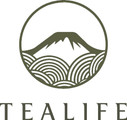The Ultimate Guide to Kaga-Boucha (2022)
The origin of the twig-based, high-end Houjicha Japanese tea.
This article was last modified December 19th, 2021. by Yuki
Though largely unknown outside of Japan - the Kaga-Boucha is one of the most famous area brands of Japanese tea inside Japan!
In this article we'll go over everything you need to know about this magnificent variation of Houjicha.
What is Kaga-Boucha?
"Kaga-Boucha" written in Japanese
A cup of Kaga-Boucha tea
This Kaga-Boucha comes in different names. "Kagabo", "Bocha" and "Kagacha" are some common ways this tea is addressed. If you ever drop by Ishikawa prefecture, these are definitely names to keep a look out.
What is the secret behind the strong aroma?
How is Kaga-Boucha Made?
What is the true definition of Kaga-Boucha?
How did Kaga-Boucha begin? History of Kaga-boucha
The Kaga-Bocha day
Summary
See Also:
FAQ
Should I brew Kaga-Boucha the same way I brew Houjicha?
Yes. As Kaga-Boucha is a type of Houjicha, you should brew it in the exact same way.
Use Boiling water and brew for 30 seconds. You can find detailed instructions on how to brew Houjicha here.
Can I cold-brew Kaga-Boucha?
Yes. As Kaga-Boucha is a high quality Houjicha, it would work very well as a cold-brew tea also.
You can find instructions on how to brew cold-brew Houjicha here. You can follow the same steps when you use Kaga-Boucha.
Yuki
Yuki is the Editor-in-Chief AND Community Manager at Tealife. He bleeds Japanese Tea and loves being a part of the Japanese Tea journey of others. Writes, does events, conducts tasting sessions, drinks, drinks and drinks tea! Easily accessible - hit him up on whatsapp (+65) 85882980.
